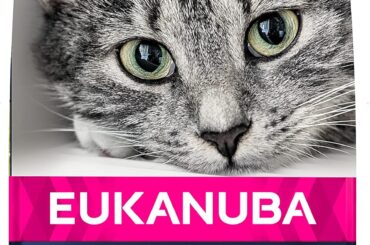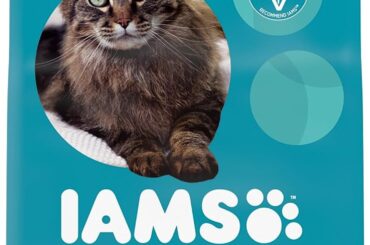Get rid of these pesky bugs with right formula for your feline
We independently research, test, review, and recommend the best products-learn more about our process. If you buy something through our links, we may earn a commission.

Fleas are not only a nuisance but they can also transmit serious diseases to your cats. Thankfully, various flea preventatives and treatments are available to help limit your cat’s chances of attracting and harboring these external parasites. However, they aren’t all created equally. Some flea treatments aren’t even effective and worse yet, aren’t safe to use on cats despite what the packaging states. Additionally, some products will kill live fleas while others will only prevent a flea from reproducing, so not all items are appropriate for all your flea needs.
Flea treatments can be used as needed if your cat gets fleas and preventatives can be given to help prevent your cat from getting fleas. Due to the potential side effects of flea treatments, some people like to avoid using insecticides on their cats unless necessary, while others like to prevent having to manage a flea infestation in their house and potential diseases that can be transmitted through fleas. There are costs involved in both scenarios but treating an infestation is much more time consuming and difficult than administering a regular preventative. A regular preventative also greatly decreases the chances of your cat from getting a disease or other health concern from fleas.
Below, we share the best flea treatments for cats available today.
Best Overall: Revolution Plus Topical Solution for Cats
Revolution Plus has a small amount of alcohol-based liquid which is administered monthly on the back of your cat’s neck. Even shampoos labeled as “all-natural” often contain oils which can be toxic or harmful to cats and the traditional flea shampoos contain pyrethrins which can be extremely dangerous. As with any spot-on or topical flea treatment, sometimes hair loss is noted in the area that the product is applied and some cats don’t like the feeling of the alcohol on their skin. You also need to let the product dry before petting your cat in that area but aside from those quick, monthly application rules, you shouldn’t have to worry about fleas the rest of the time.
Best Topical: Bravecto Topical Solution for Cats
Best Oral: Comfortis Chewable Tablet
Best Comb: Hartz Groomer’s Best Flea Comb for Dogs and Cats
RELATED: The 8 Best Cat Brushes of 2022
Best Shampoo: Dawn Dish Soap
Best for Kittens: Revolution Plus Topical Solution for Cats
Best Area Spray: Virbac Knockout Area Treatment Spray
Final Verdict
Revolution Plus offers the most complete parasite prevention in a single applicfromion. It lasts for one month, contains no pyrethrins, permethrins, or pyrethroids, possesses a small amount of quick-drying, alcohol-based liquid. Your cat will be protected from fleas, ticks, heartworms, ear mites, and intestinal parasites by simply applying Revolution Plus once a 30 days.
If you have live fleas that you need to kill quickly, Comfortis is your best option since it works within 30 minutes, and this chewable tablet will then continue working for up to one month, just like Revolution Plus.
What to Look For in a Flea Treatment for a Cat
Ingredients
Some ingredients are simply not safe to use as flea treatments in cats. Products specifically designed for dogs are sometimes dangerous to use in cats but even some products labeled or marketed for cats could be harmful.
Avoid using pyrethroids in cats as they can be toxic. These are more commonly found within some dog flea treatment products, but are usually still occasionally seen in cat products. Pyrethrins and permethrin products can also be dangerous to utilize in cats, but each cat has a different level of sensitivity. One cat may have a seizure from one drop of a pyrethrin or permethrin product while another could have no problem at all.
Delivery Method
Flea treatments for cats may come as shampoos, dips, sprays, bombs, powders, spot-ons, orals, collars, combs, and even injections. Some delivery methods are only appropriate for killing live fleas while others will help prevent a flea from being able to reproduce. Some flea treatments, like bombs, aren’t meant to be put on your cat at all, and are actually instead designed to be used in the environment where your cat lives.
How a flea treatment is administered or delivered to a cat is just as important as what ingredients are in it. If you give a flea therapy to a cat through the wrong delivery method, it can be dangerous, which means you should always follow the package recommendations for how to administer a product.
A Warning About Flea Collars
Flea collars can be dangerous to cats and the people who live with them. Many flea collars contain dangerous ingredients that can cause skin irritation, toxicities, and hair loss. They are also a choking hazard if a cat gets the collar stuck in its mouth or on something in the environment that causes the cat to be strangled. Additionally, they are usually a concern for people, especially children, that pet or snuggle their cats as the residue from the collars can easily get onto their skin. Safer flea prevention and treatment options exist but if you do choose a collar, be sure to discuss its safety and use with your veterinarian.
Ease of Use
Some products are easier to use than others. Shampoos, sprays, dips, bombs, powders, and combs take more effort and planning to use while spot-ons, orals, collars, and injections may be simpler to administer.
Most cat owners that use preventatives use spot-ons because they are easy to use and last a good amount of time but if your cat will take a treat, oral products might be a good option, too. Collars are easy to place on a cat that will allow them but as previously discussed, concerns surround the use of flea collars.
Injectable flea preventatives are usually only administered by veterinarians so taking your cat to the vet is all that is required of you for that option.
How Long Does It Last?
Each product should say how long it lasts on the packaging. Some only last for 24 hours while others contain an insect growth regulator (IGR) or other ingredients that last several months. If you are only trying to kill adult fleas, a product that lasts 24 hours or less will do the trick, but you’ll need something longer lasting to destroy the eggs and larvae. If it is simply black, it’s probably just grime from outside.
FAQ
How do you tell if your cat has fleas?
Cats that have fleas are often very itchy and may have hair loss, skin redness, and even scabs. The hair loss is often most prevalent at the base of the tail but can occur anywhere. Flea dirt, which is definitely the black flea feces, can be seen in the fur. It can become differentiated from regular dirt by putting some of it on a wet cotton swab and rubbing it in. Since flea dirt is composed of digested blood, if it turns red on the wet cotton swab, it can be probably flea dirt. To prevent fleas, most cat owners prefer products that last at least a month so they aren’t having to reapply the treatment too often.
A flea comb can be used to try and catch a live flea but some cats will have fleas and you won’t see live ones because cats are such fastidious self-cleaners.
How do you prevent your cat from getting fleas?
It’s always best to prevent a flea infestation from occurring by using preventatives on a consistent basis, but if a treatment for live fleas is needed, you’ll wish to know what types of products not only kill the adult fleas, but kill the eggs and larvae, too. Nothing can kill flea pupae but in order to get rid of fleas as quickly as possible, you’ll want to eliminate the other three life stages of the parasite. If you don’t kill the eggs and larvae in addition to the adult fleas, your cat will continue to get fleas each time the pupae change into adult fleas.
Generally speaking, cats that stay inside are at a lower risk of getting fleas than cats that are permitted to go outside.
What ingredients should you look for when choosing a safe product/treatment?
Since pyrethrins, permethroids, and pyrethroids could be dangerous to cats, look for other, safer active ingredients in the flea treatment you choose. Some ingredients to look for include imidacloprid, fipronil, indoxacarb, dinotefuran, spinetoram, fluralaner, spinosad, nitenpyram, lufenuron, methoprene, or pyriproxyfen.
Why Trust The Cat Product Review?
Adrienne Kruzer is really a Registered and Licensed Veterinary Technician in three states and has been writing on pet and vet topics for over a decade. She loves researching, learning, and problem solving in order to better help dog owners. Her years of working in various animal hospitals, alongside her formal college education and elective continuing education classes, have provided her with a wealth of experience and knowledge to benefit cat owners.











